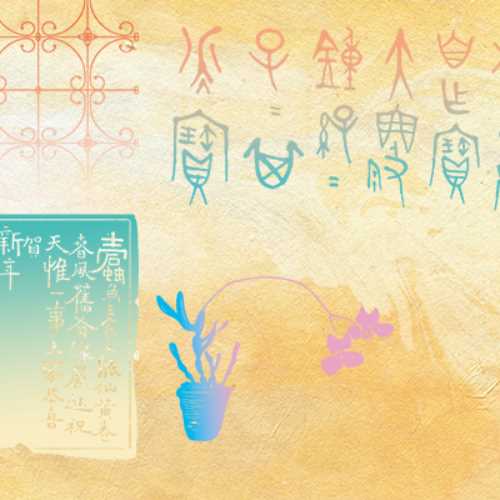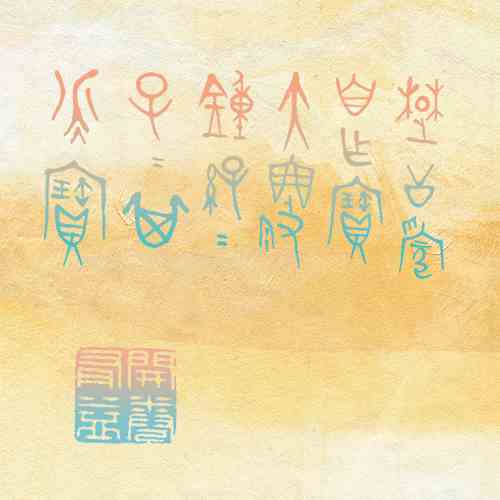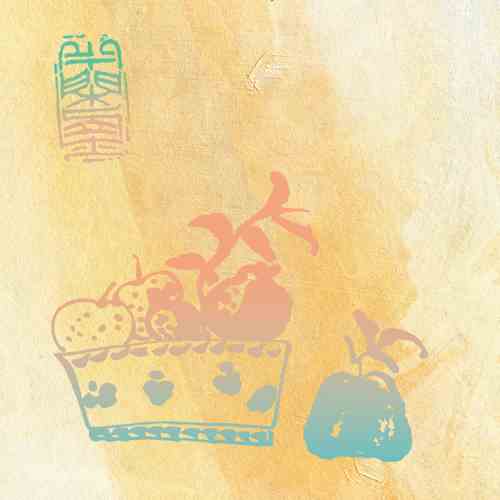Couplets and horizontal verses are touchstones helping the recipient assess the author's knowledge, morals, and sincerity. These calligraphic works are written for personal motivation as well as for one's literary friends. Since they are often displayed in public, errors are not permissible. These plaques are rhythmic and emanate great charm. In inscribing a book title, hanging banners of calligraphy on the door, or hanging a plaque for a government agency or business, all the words conveyed in ink demonstrate extraordinary strength.
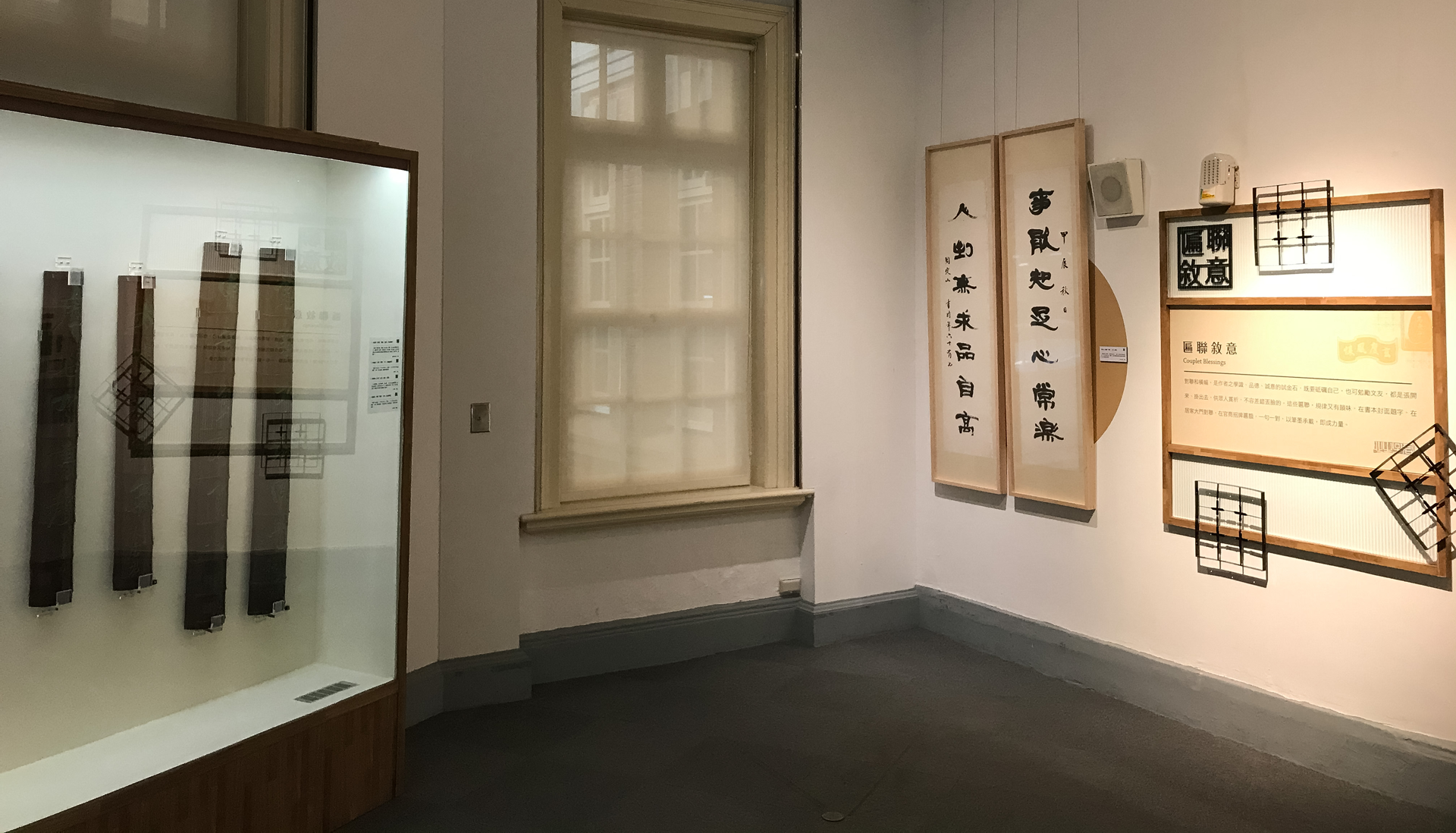
𓇬 𓇬 𓇬
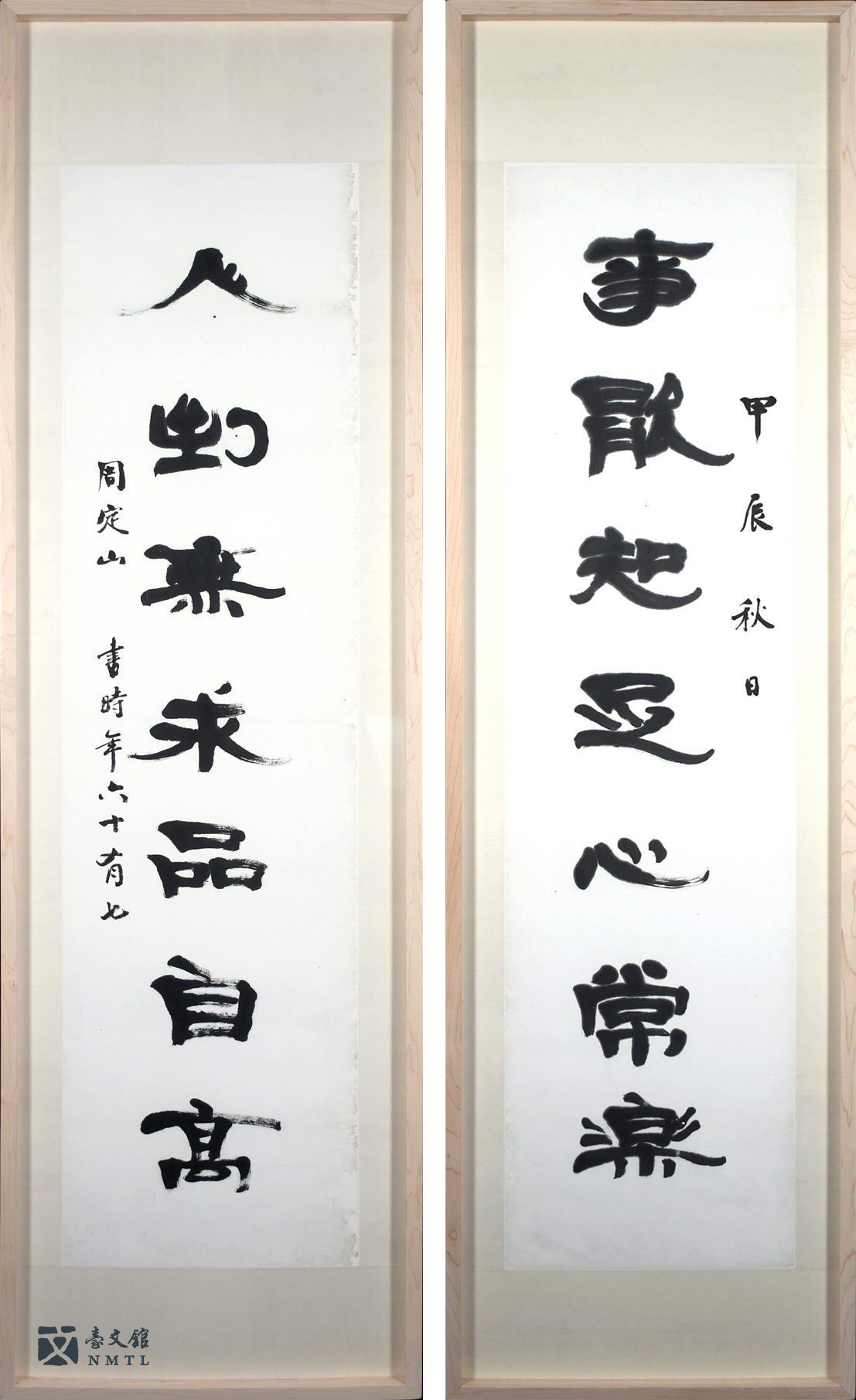
🖌 Chou Ting-Shan's "Couplet 'Things and People' in Clerical Style"
"Contentment leads to happiness; when there is no desire, moral enhancement can be reached." These lines were probably originally written by Chen Bo-Ya in the Qing Dynasty. This calligraphic work was written by Chou Ting-Shan in 1964 in clerical style. The work presents different levels of ink thickness and interesting changes in its closely connected composition.(Donated by Chou Ting-Shan's family)
𓇬 𓇬 𓇬
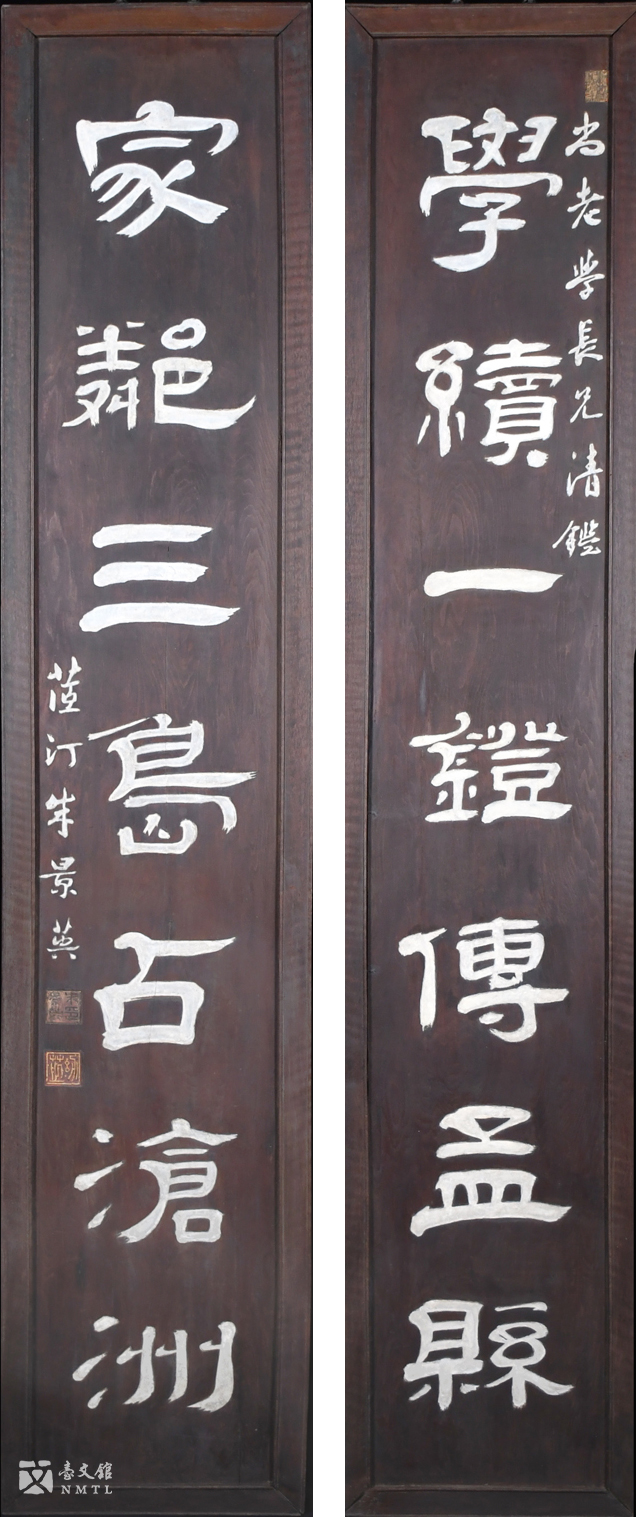
🖌 Chu Ching-Ying's "Wood Carved Couplet 'Achievement and Neighbors' in Clerical Style"
This couplet "學續一鐙傳孟縣,家鄰三島占凔洲"(translation) was written by Chu Ching-Ying as a gift to his friend during the reign of the Qianlong Emperor. It was written in clerical style. The tips of left-falling and right-falling strokes are not restrained and the characters are wide and strong. This wood-carved couplet was a gift sent by Suzumura Kushiame to Ozaki Hotsumi during the Japanese Colonial Period. Ozaki praised it with the words "elegant and quaint."(Donated by Wei Ching-Te's family)
𓇬 𓇬 𓇬
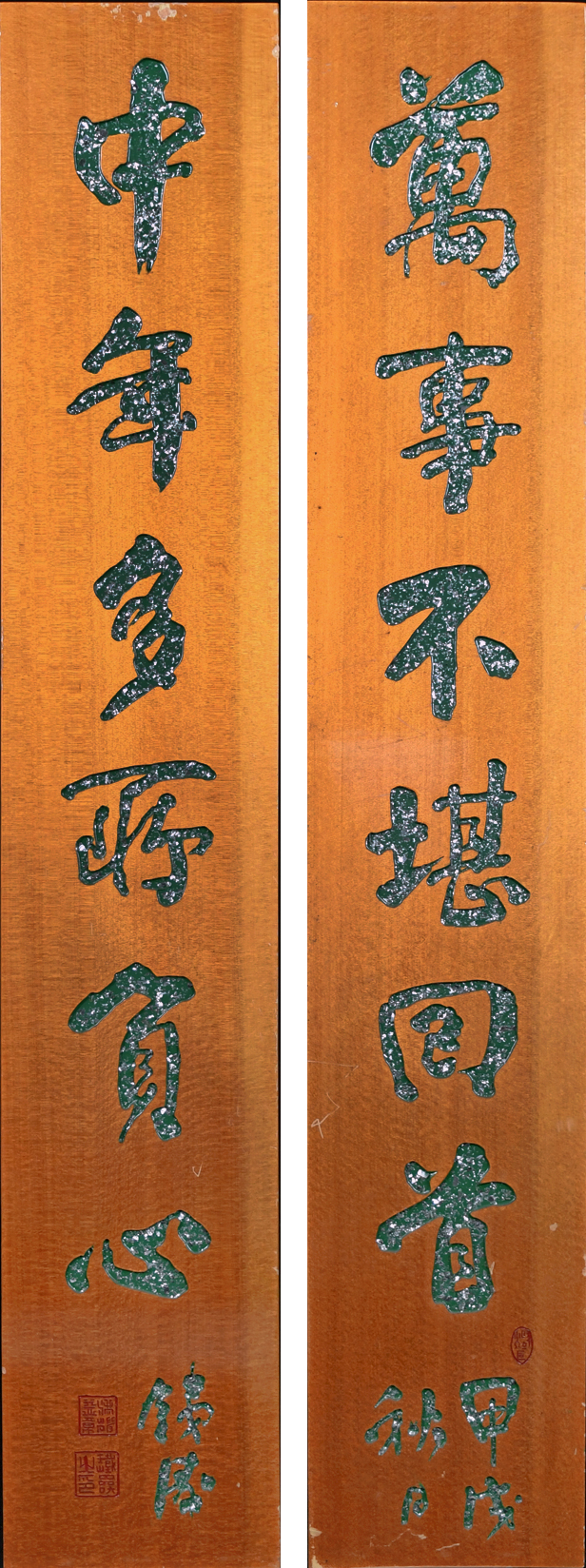
🖌 Hung Tieh-Tao's "Raden Couplet 'Everything and the Middle Aged' in Semi-cursive Style"
"萬事不堪回首,中年多所負心"(translation). This was written by Hung Tieh-Tao in the autumn of 1934 in semi-cursive style. The characters are filled with much strength and the Raden is delicate and resplendent. The couplet conveys laments for old age as well as regrets about the things that were missed and disappointments.(Donated by Hong Shu-Zhao)
𓇬 𓇬 𓇬

🖌 Hung Tieh-Tao's "Couplet 'Sky and Valley' in Semi-cursive Style"
"太空橫劍氣,虛谷有書聲"(translation) is a couplet embedded with names. It was written by Hung Tieh-Tao in the 1930s as a gift to Su Dong-Yue from Shanhua. The couplet was inspired, with Su Dong-Yue's alias. The work was written in semi-cursive style, with the first characters made longer and the rest of the characters evenly arranged between the bamboo nodes. The couplet praises Su Dong-Yue's character and talents (as a renaissance man).(Donated by Hong Shu-Zhao)
𓇬 𓇬 𓇬

🖌 Hung Tieh-Tao's "Bamboo Carved Couplet 'Everything and the Middle Aged' in Semi-cursive Style"
"萬事不堪回首,中年多所負心"(translation). It was written by Hung Tieh-Tao in the autumn of 1934 in semi-cursive style. The characters are smooth, and the bamboo carvings show the elegance of a literary man. This couplet also has a Raden version. The couplet conveys laments for old age as well as regrets about the things that were missed and disappointments.(Donated by Hong Shu-Zhao)
𓇬 𓇬 𓇬

🖌 Zhang Li De-He's "'Save The World and Show Empathy' in Semi-cursive Style"
"The words mean "save the world and show empathy" and were written in the spring of 1969 by Zhang Li De-He at the age of 77. The work was written in semi-cursive style. Though the characters are slim, they show tremendous power. (Donated by Su Zhang Wan-Ying)
𓇬 𓇬 𓇬
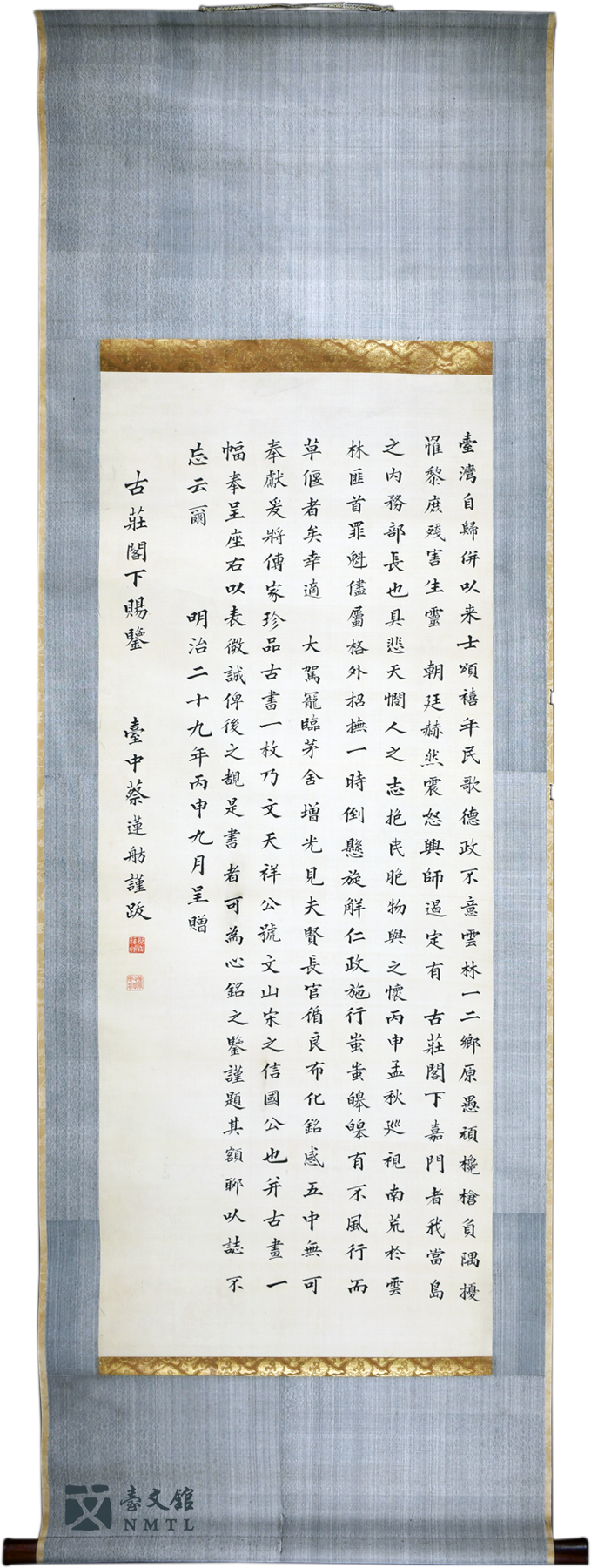
🖌 Tsai Lien-Fang's "Words for Furushō Kamon in Regular Style"
In 1896, after the Yunlin Incident, Tsai Lien-Fang wrote this as a gift to Furushō Kamon, who was responsible for quelling the unrest. The work was neatly written in regular style. This meticulous work was a message to the new regime. It is a work with historical significance.
𓇬 𓇬 𓇬

🖌 Zheng Zhi-Chen's "Chiang's Essays in Semi-cursive Style"
The words originally came from CHIANG'S ESSAYS ON KNOWLEDGE AND CRAFTS, which advocates that calligraphy should have no rules or patterns, but rather reflect the creator's own ideas. The work was written in semi-cursive style. In 1918, the written characters were given as a gift to Er Yu. The style is similar to that of Zhao Meng-Fu, which is smooth and elegant. The characters are slightly outward, incorporating Yan Zhen-Qing's style in line with the general aesthetic standards of the time.

